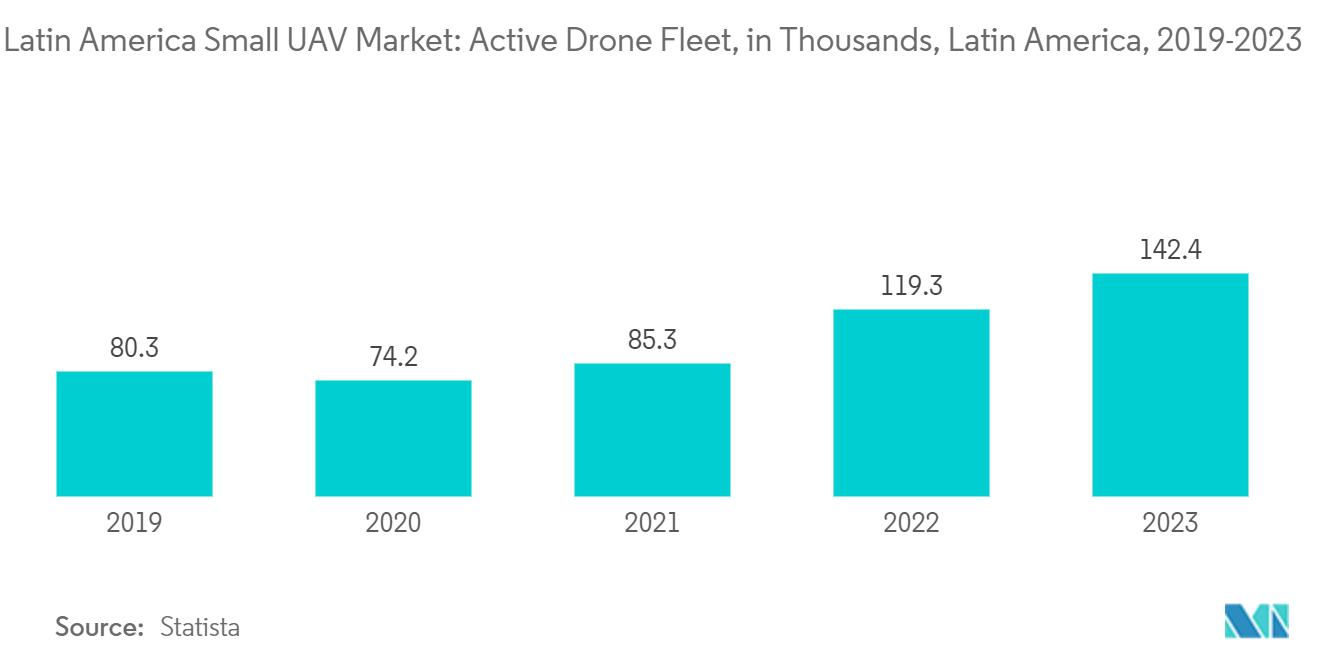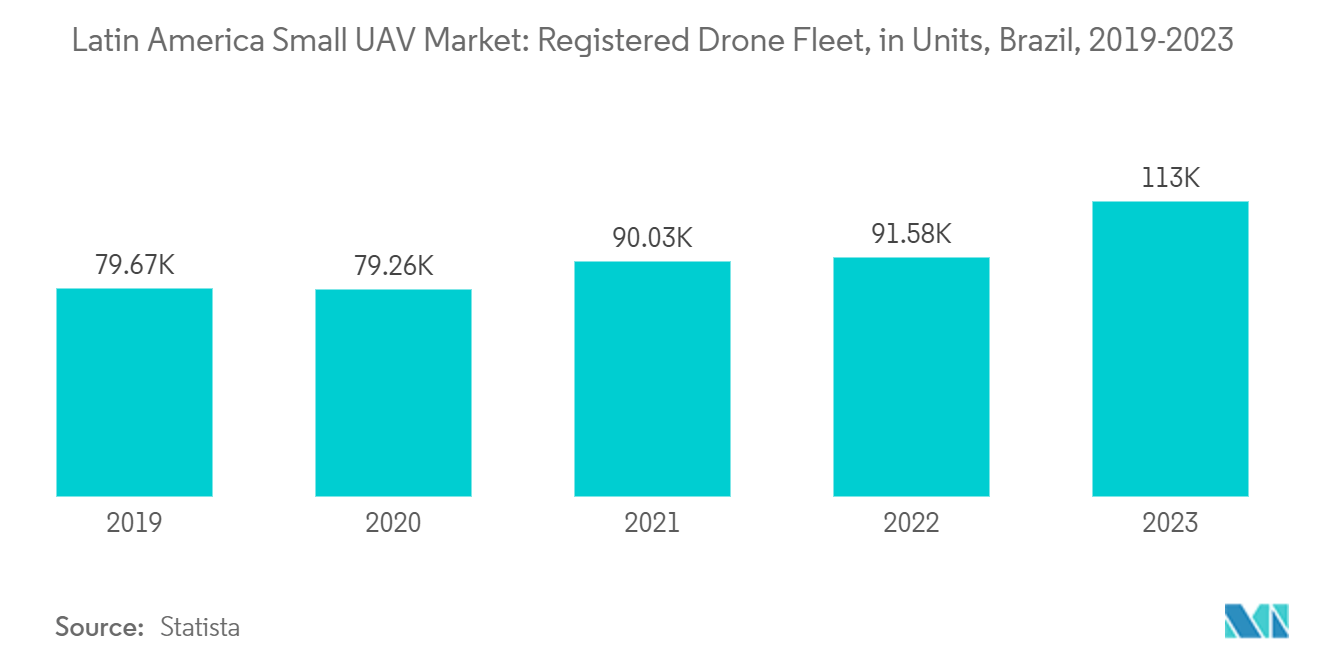Market Trends of Latin America Small Uav Industry
The Civil and Commercial Segment is Projected to Register the Highest CAGR During the Forecast Period
The use of small UAVs in Latin America is constantly increasing in the civil and commercial segment. Small UAVs are widely adopted for monitoring applications like mining, agriculture, engineering, and construction in various regions. Small UAVs have a bright future in Latin America and other potential applications, including shipping, transportation, and security. Also, with a large forest base and uninhabited lands in the region, it becomes imperative for forest officials and government authorities to possess the capability to survey the vast lands. This led to increased demand for small UAVs for these applications from the respective organizations.
Also, the immense size of the Amazon rainforest that covers much of northwestern Brazil and extends into Colombia, Peru, and other Latin American countries, together with its damp nature, makes it difficult for any human intervention. As a result, private companies are surveyed and looking after the forest. Since 2020, drones have been used by indigenous tribes to detect and fight illegal deforestation in their territory, thereby protecting the Amazon rainforest. Farming has been another application that is witnessing an increased adoption of UAVs. Small UAVs are working with local business owners to introduce farming UAVs for aerial seeding.
For instance, in March 2023, a team of researchers from the National University of San Luis developed a low-cost, open-access UAV that allows for intelligent reforestation in Argentina. The project "Sustainable Hawk Eye" utilizes artificial intelligence to allow the UAV to survey the area, identify areas with no vegetation, and accurately distribute seeds in difficult-to-access areas that are not reachable through traditional manual planting methods. Such developments are expected to drive the segment's growth during the forecast period.

Brazil to Dominate Market Share During the Forecast Period
Brazil has been the largest user of drones in farming and agricultural activities. The country also has established unmanned aerial vehicle developers for agriculture, forest, and urban center mapping. For instance, in November 2023, a defense entity in Brazil unveiled a prototype of an exploding drone. The scheduled release of the finalized product is earmarked for the beginning of 2025. The unmanned aerial vehicle boasts a 120-kilometer (62-mile) range, a velocity of 612 kilometers per hour (380 miles per hour), an operational duration of one hour, and a payload capacity of 20 kilograms (44 pounds).
Also, the increasing government operations against narcotics in the region have increased the demand for surveillance drones. As a result, there has been a constant rise in the number of UAVs or small drones utilized for various purposes in the country. For instance, Brazil's number of officially registered drones was about 30,000 units in 2017. This increased to more than 113,000 units as of 2023.
The military's use of small UAVs is also increasing as the country slowly tries to enhance its autonomous capabilities. In March 2022, the Brazilian army received the Nauru 1000C UAVs. These UAVs were ordered for intelligence, surveillance, target acquisition, and reconnaissance (ISTAR) missions. These new drones are expected to improve the army's effectiveness significantly. Thus, the ongoing developments in UAV technologies will help the country dominate the Latin American small UAV market.


